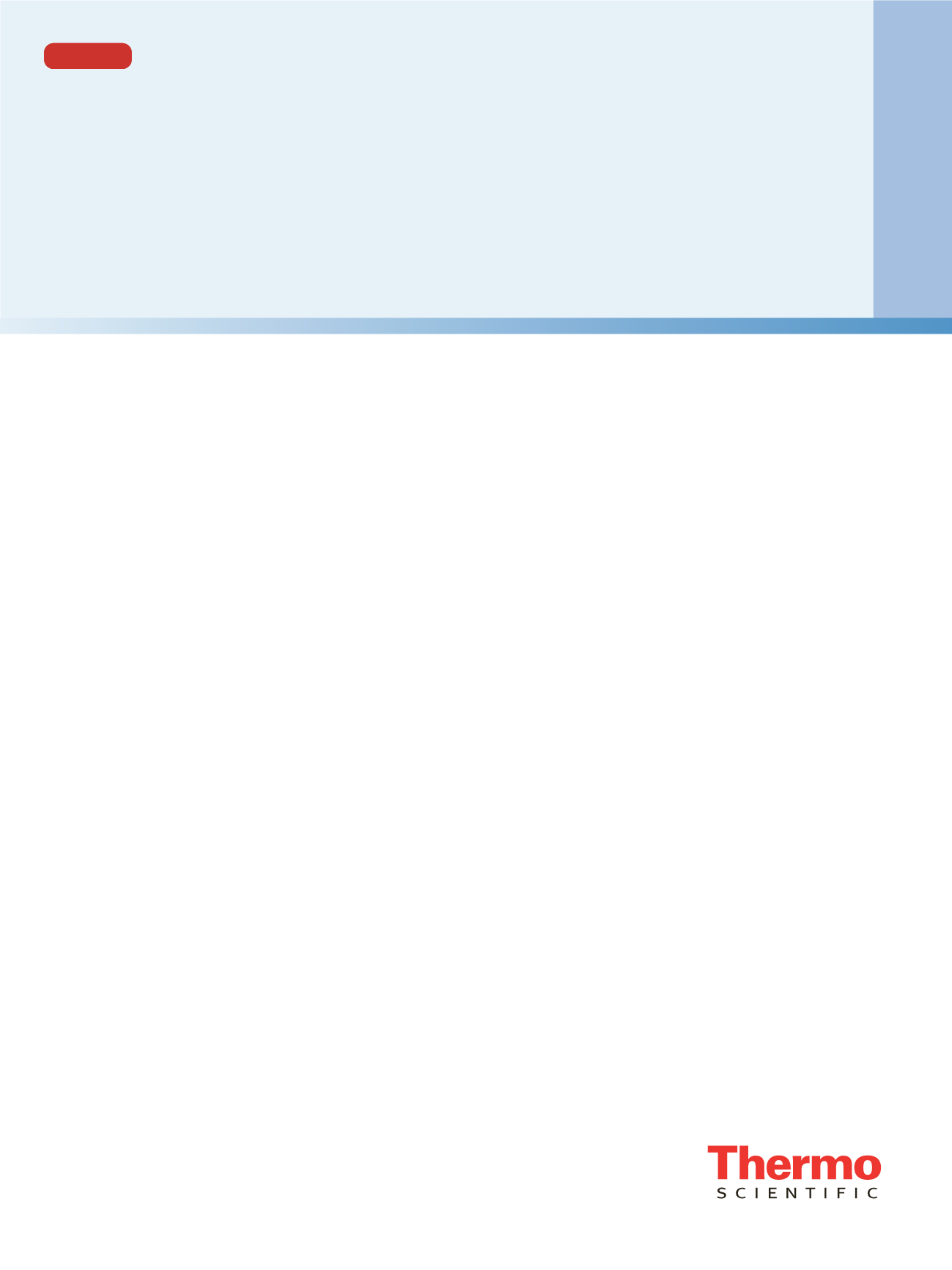

Quantification of 17 Antiepileptics and
Their Metabolites in Human Plasma by
LC-MS/MS for Research
Claudio De Nardi, Thermo Fisher Scientific, Dreieich, Germany
Anna Morando, Anna Del Plato, Ospedale “La Colletta“, Arenzano, Italy
Application Note
608
Key Words
Antiepileptic drugs, antiepileptics, AEDs, anticonvulsants, antiseizure drugs,
liquid chromatography, triple quadrupole mass spectrometry,
TSQ Quantum Access MAX
Goal
Implement an LC-MS/MS method for the quantification of 17 antiepileptics
and their metabolites in human plasma.
Introduction
Liquid chromatography coupled to tandem mass
spectrometry (LC-MS/MS) is a valuable tool that can help
clinical researchers to monitor that antiepileptic drugs
remain within the desired range. Here, an LC-MS/MS
method on the
Thermo Scientific ™ TSQ Quantum Access MAX ™ triple quadrupole mass spectrometer was used
with the MassTox
®
TDM Series A kit for antiepileptics
from Chromsystems
™
to quantify a panel of 17
antiepileptics and their metabolites in human plasma.
The MassTox TDM Series A kit includes levetiracetam,
theophylline, felbamate, lacosamide, rufinamide,
carbamazepine, oxcarbazepine, carbamazepine diol,
carbamazepine-10,11-epoxide,
10-hydroxycarbamazepine, phenylethylmalonamide
(PEMA), primidone, phenytoin, stiripentol, zonisamide,
phenobarbital, valproic acid, and 12 internal standards.
Experimental
Sample Preparation
The MassTox TDM Series A kit for antiepileptics was
used. The 17 evaluated analytes were divided into three
groups. Each group required a different extraction
procedure and analytical method. The kit included dried
calibrators at three different concentration levels and
dried controls at two different levels. Concentrations of
calibrators and controls are reported in Table 1.
The kit also included an extraction buffer, a precipitating
agent containing all the internal standards (IS), and two
different dilution buffers (dilution buffer 1 and dilution
buffer 2).
Dry calibrators and controls were resuspended using 1 mL
of distilled water and let rest for 15 minutes at room
temperature. Blanks, calibrators, controls, and samples
were protein precipitated as follows:
• 100 µL of blank, calibrator, control, or sample
• 50 µL of extraction buffer
• 500 µL of precipitating agent containing the internal
standards
Calibrators and controls were extracted in duplicate.
Precipitated samples were vortex-mixed and centrifuged
for 10 minutes at 4 °C at 3200
g
. Supernatant was diluted
using different dilution schemes depending on the group
prior to injection onto the LC-MS/MS system:
• Group 1: dilution 1:10 (20 µL + 180 µL) with dilution
buffer 1 / dilution buffer 2, 50:50 (v/v)
• Group 2: dilution 1:5 (100 µL + 400 µL) with dilution
buffer 1
• Group 3: no dilution



















